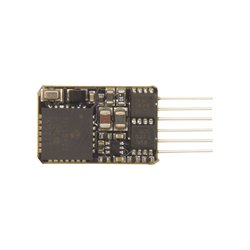Rust is a combination of colours. It is made up of browns, orange and even red. Old rust has a darker look whereas...
No products
Product successfully added to your shopping cart
There are 0 items in your cart. There is 1 item in your cart.
Search Tips
Christmas and New Year
We are dispatching orders every weekday apart from Christmas Day, Boxing Day and New Year's Day.
If you order is time critical, select next day delivery at checkout.
The shop in Sandown is closed from 25th December, reopening on 30th December.
What advantages does DCC have over analogue?
Digital Command Control (DCC) has several advantages over analogue control systems in the context of model railways.
Firstly, with DCC, multiple locomotives can be controlled independently on the same track. Each locomotive has its own unique address, allowing the operator to control its speed, direction, and other functions, such as lights and sound, without affecting the operation of other locomotives on the track. This is in contrast to Analogue control, which is intended to control only one locomotive at a time. On an Analogue system power is directly applied to the track, so in effect all locomotives on the track will respond to the same control inputs.
Secondly, DCC allows for more realistic operation of locomotives. With DCC, locomotives can be controlled with finer precision, allowing for smoother acceleration and deceleration, as well as more realistic operation of other features, such as steam exhaust and braking. Additionally, DCC allows for the simulation of complex operations, such as shunting and coupling, which can be difficult or impossible to achieve with Analogue control.
Thirdly, DCC allows for easier automation of layouts. With DCC, trains can be programmed to run automatically, stopping and starting at specific points and even running according to a timetable. This can be especially useful for larger layouts, where it may be difficult to manually control multiple trains simultaneously.
Finally, DCC can offer more flexibility in terms of layout design. With analogue control, wiring can be complex, and each section of the track requires its own power feed. With DCC, however, power can be supplied to the entire layout through a single bus, allowing for simpler wiring and greater flexibility in track design. Overall, DCC offers several advantages over analogue control in terms of more realistic operation, greater flexibility and easier automation of layouts, making it an attractive option for many model railway enthusiasts.
Click here to receive the tips weekly in your mailbox. You can unsubscribe at any time.










